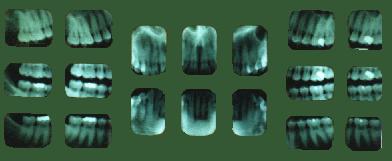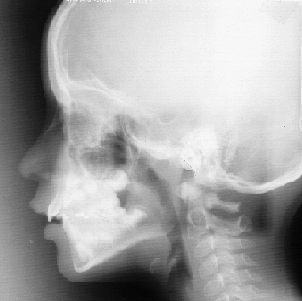|
Taken
to view all teeth and surrounding tissues.Very high definition details
of the individual teeth.
|
 |
We seek to render the most professional and thorough care that is consistent with the current dental standards. We share patients concern about x-rays and we take every precaution to minimize exposure. Among the safeguards we use:
There has never been a single instance reported in the dental or scientific literature of a patient contracting a malignancy because of dental x-rays.
- Every patient is draped with a lead radiation apron before any x-ray is taken.
- We try to postpone all x-rays with women who are or might be pregnant. The one exception is with absolute emergencies - and then only with the consent of her obstetrician.
- We use only the highest speed films. Radiation is minimized because less time is required for to expose the film.
- Check up x-rays are taken only where indicated and under the following schedule:
- 1. Decay prone or periodontal problems: Every 6 months.
- 2. No new pathology for 18 months: Every 12 months.
- 3. Full mouth survey: Every 5 years or as indicated.
The amount of radiation received from dental machines is as little as one twentieth of the power of a medical x-ray machine. Another major difference with dental x-rays is that there is no scatter of x-rays. The benefits from necessary dental x-rays are far greater than the hazards. without dental x-rays we could miss finding a tumor, decay or periodontal disease.
A complete dental
exam gives about one and half day's worth of radiation exposure that we
would normally receive.
|
Taken
to view all teeth and surrounding tissues.Very high definition details
of the individual teeth.
|
 |
|
These
x-rays are taken to view back teeth. A bitewing series is used to update
a recent full series on a regular schedule that is appropriate for each
patient.
|
 |
|
Complete
upper and lower jaw. Good for impacted teeth, eruption of permanent teeth,
jaw fractures, tumors, cysts, etc. Not as good as full series for the details
of individual teeth.
|
|
|
 |
|
|
 |
|
This side view of the head, used most commonly for orthodontic determinations of treatment. The soft tissues of
the face are specially enhanced so as to be able to determine the changes
to profile that orthodontic therapy will alter.
|
 |
|
|